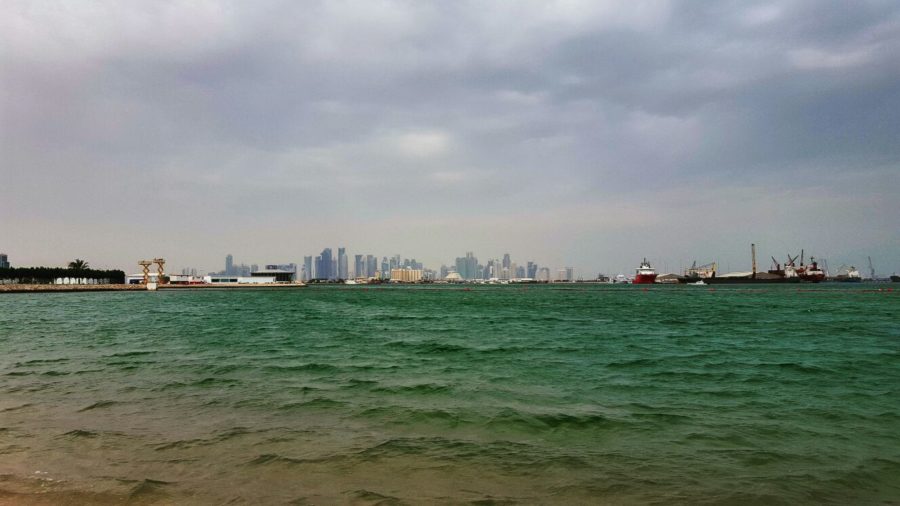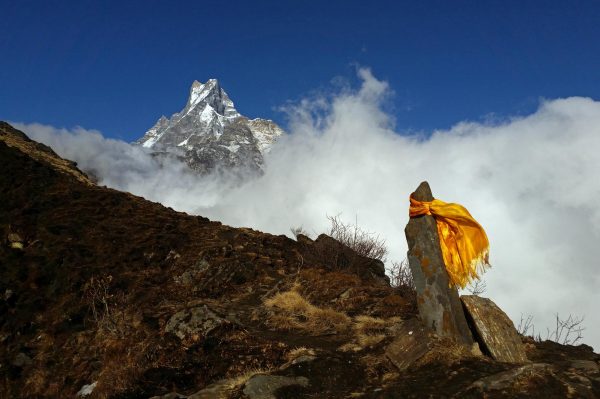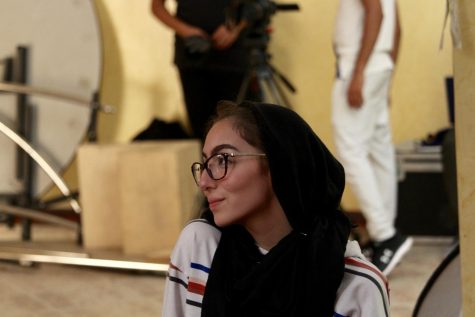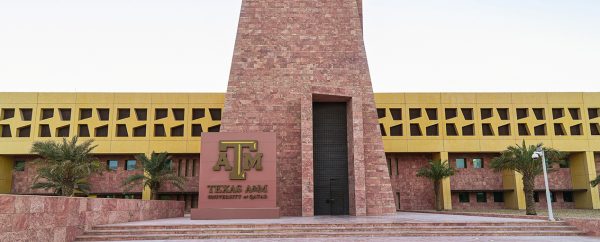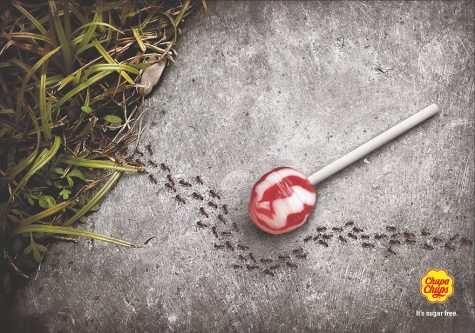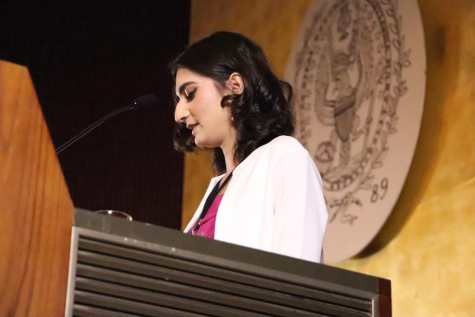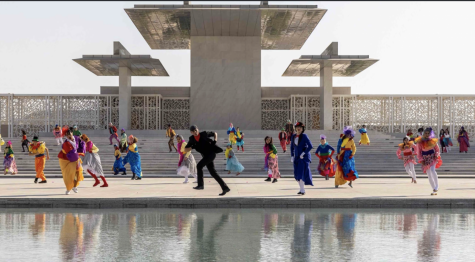Environmental woes: How climate change could impact Qatar
A polar bear stranded on an iceberg in the middle of the ocean. That’s one of the images that come to mind when I hear the words climate change. There’s one problem, though. I’ve never seen an iceberg or a polar bear. And if I stay in Doha all my life, there’s zero chance I ever will.
So, who is this polar bear and why is he in my head? And as a resident of Qatar, why should I care about polar bears and melting ice caps anyway?
A recent study conducted by Elfatih A. B. Eltahir, a hydro-climatologist and meteorologist with the Massachusetts Institute of Technology, and Jeremy S. Pal, a professor of civil engineering and environmental science at Loyola Marymount University, has dire warnings for the Gulf.
According to their research, which was published in the Nature Climate Change Journal, the Arabian Gulf is set to experience a deadly rise in temperature. This region receives much more sunshine than many places around the world. The skies are typically clear, allowing more heat to penetrate through to ground level. More sunlight and clearer skies mean that a lot more water evaporates from the sea. This saturates the air around us, making the air feel stuffy and wet. It is these very features that may spell doom for this region, according to the study. If this climate crisis isn’t mitigated, countries like Qatar can expect trouble in the form of extreme heatwaves by the end of the century, significantly raising the risk of ailments such as heat strokes.
We’ve heard about this a lot, climate change and what it can do to the environment. We’ve also heard of the perils of increased carbon dioxide in the atmosphere. These are combinations of strong points, evidence, and data that have been diluted by their reiteration over time—in the news, in our social spheres, and in politics. Many of us have heard that all of this pollution does something in the atmosphere, and in turn, the ice caps are melting, and that this is bad.
But this is still important to understand. Climate change is a worldwide phenomenon. It refers to the measurable increase of carbon dioxide in the atmosphere since the beginning of the second industrial era. In the 20th century, industries began using lighter materials, alloys of metals, and plastics. These enabled them to create automated factories that could do jobs much faster and cheaper. The most pivotal invention of the 20th century in terms of an industry was the assembly line. Cars that would usually take hours to days if worked on by one person now took a few hours if it moved through the factory on a conveyer belt. The production of goods increased along with the population at the time. There was only one catch: these automated machines ran on fossil fuels.
Extreme heatwave events under the business as usual scenario can be deadly
Fossil fuels, such as petrol, diesel, and coal, dispel astronomical amounts of greenhouse gases, which trap heat (just like greenhouses) into the atmosphere. These gases, such as methane and carbon dioxide, act as cozy blankets that don’t let the sun’s heat escape.
Now, imagine you’re going to bed. It’s 15 degrees Celsius and you’re handed a skimpy blanket that does not even cover your toes. That’s not going to cut it, right? A second blanket is what you need. Now, imagine someone adding more blankets on top of you. Pretty soon you’ll start sweating and want to get out from underneath. We’ve been adding blankets to our planet for well over a century, and we can’t really get out from underneath.
Along with greenhouse gases, soot is also released into the atmosphere. It covers ice, causing it to melt faster. Ever worn a black shirt in the sweltering sun? I have, and it’s how I imagine an oven feel like. Soot is black and it melts ice. That’s why the polar bear is stranded on an iceberg.
If the far northern and southern reaches of our planet are experiencing such dramatic environmental changes, what about the toastier locales like Qatar?
Qatar is the world’s second largest liquefied natural gas exporter. Its bustling economy has attracted roughly 2.6 million people, 313,000 of whom are Qatari nationals. The low cost of living, highest GDP per capita in the world, and one of the lowest price points of petrol and diesel mean that people living here don’t really have to think twice about owning a vehicle, or two vehicles even. Cars are quicker than Karwa buses, which many of us don’t even know how to access, and air conditioning is a necessity in the summer.
There’s that word, summer. Qatar experiences an average high temperature of 37 degrees Celsius but can reach up to 41 degrees Celsius. Qatar’s average relative humidity is also 59 percent but can reach as high as 71 percent. Humans have been known to survive just fine in hot weather conditions as long as the air is dry. Because sweating causes the heat from your skin to transform into water and then evaporate, lowering your body temperature, your body is capable of cooling itself down. In humid weather, however, sweat doesn’t evaporate at a sufficient rate. The air is already saturated with moisture, decreasing the rate of evaporation of sweat on your skin.
Our bodies regulate at roughly 37 degrees Celsius at our core. If this temperature reaches 35 degrees, we get what is known as hypothermia, and our organs slowly shut down. But if this temperature rises above 37.5 or 38 degrees Celsius, we get hyperthermia. Hyperthermia is any ailment as a result of high temperatures, such as heatstroke, exhaustion or rash. So maybe the image of a polar bear stranded on an iceberg isn’t relevant here. Think instead of a camel dying from a heat stroke in the desert.
“Extreme heatwave events under the business as usual scenario can be deadly,” Elfatih said in an email interview. His study concluded that the Gulf will experience a wet bulb temperature of 35 degrees Celsius. That may not sound too bad, but the science says otherwise.
When we see the weather forecast, the temperature that is provided is usually the dry air temperature. This means the temperature was measured with a standard thermometer. A wet bulb temperature, on the other hand, is measured with a thermometer wrapped in a wet cloth. This wet cloth acts like sweat, evaporates and cools the thermometer down. Lower humidity rates mean that the wet bulb temperature is less than the air temperature. Higher humidity rates mean that the wet bulb temperature can approach the air temperature or exceed it. Also, higher humidity rates translate to lower evaporation, giving people the sensation that they are overheating. So that not-too-bad 35 degrees Celsius wet bulb temperature roughly feels like 72 degrees Celsius in 100 percent humidity (you can test that calculation for yourself here). That’s hotter than a fresh cup of coffee and on the lower end of acceptable temperatures to slow roast a lamb leg.
“Air conditioning would be sufficient and necessary during extreme heat events, even under the business as usual scenario,” Elfatih said. What this means is temperatures will worsen toward the end of the century and will reach a point where walking outside would not be recommended without protection. Business as usual in Qatar during the summer is to spend the vast majority of your day indoors, even during the night, if you are able. But high temperatures and risks of bodily harm may discourage people from stepping outdoors to the extreme.
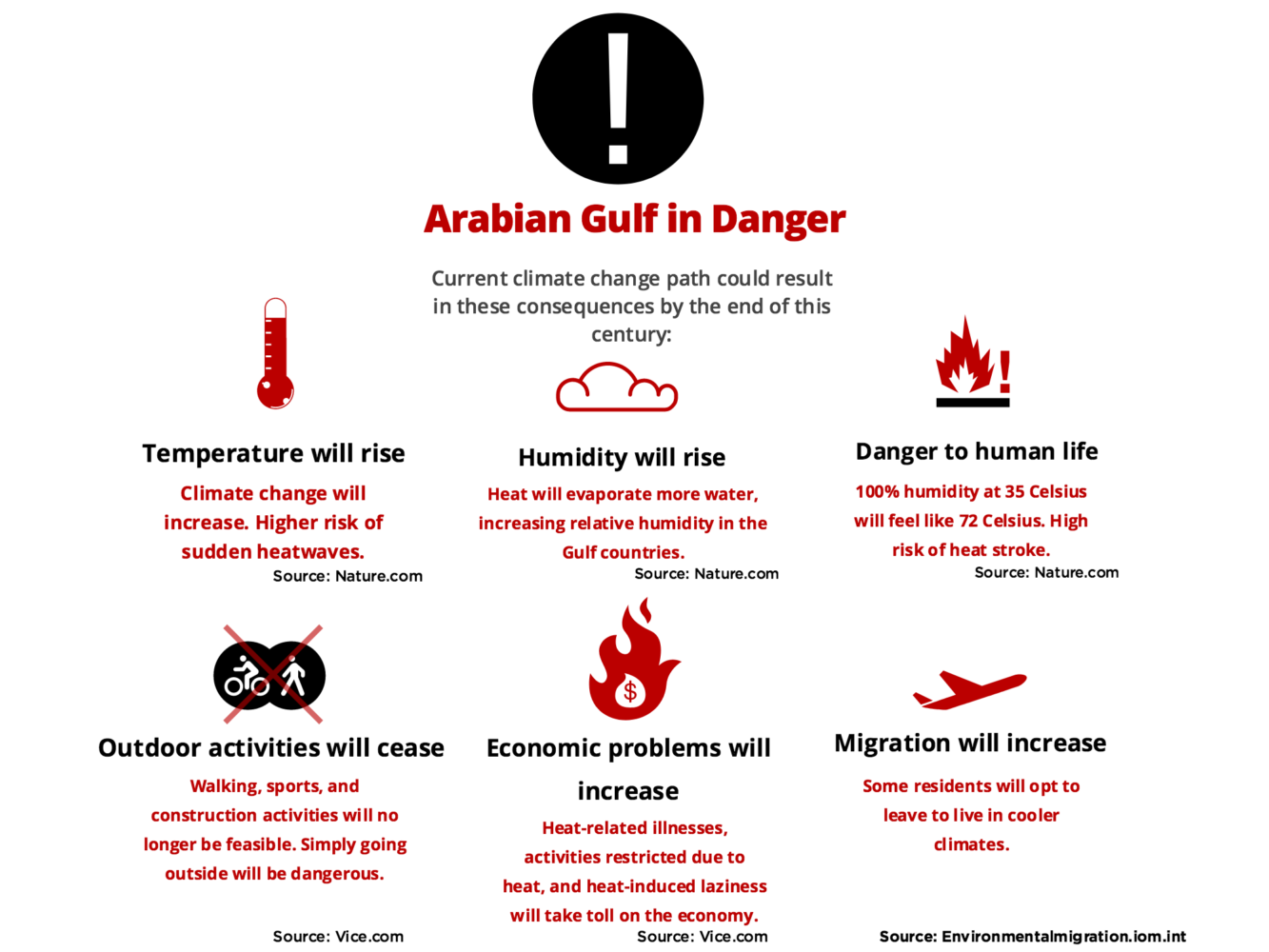
The climate crisis blow could be softened with cooling clothing and hats to preserve well-being. But this inability to go outdoors will likely impact the economy. According to Elfaith, construction projects will no longer be feasible during the summer months as the conditions become hostile. Overall, work will become difficult to complete, and productivity will drop during the summer. Commuting from home to work will be arduous as well, which will possibly result in losses for the private and public sector. Walking to and from your vehicle will not be advised. People may opt to leave rather than endure the heat, which will be considered displacement due to climate change.
Elfatih says that an incentive to protecting the environment is that it’s a “great opportunity for those interested in scientific research.” He encourages journalists and content producers to focus on educating the public in the present to mitigate the issue of climate change, rather than face catastrophe in the future. Elfatih also urges Qatar’s residents to stop driving SUVs and to instead purchase electric vehicles.
Elfatih’s study is a grim projection for a place so many people call home, but it will happen if we let it. It is very likely that you, just like almost everyone else you know, and everyone that they know, contribute to rising temperatures. Sure, it might be a very small contribution, but over time it adds up in the grand scheme. If we do nothing and instead silently hope that hundreds of millions of good Samaritans are going green, driving electric cars and using solar energy so that we don’t have to, more likely than not, those good Samaritans are hoping the same of us. Every living thing is a beneficiary of the fight against climate change. If you won’t do it for yourself, do it so I can get this polar bear out of my head.



